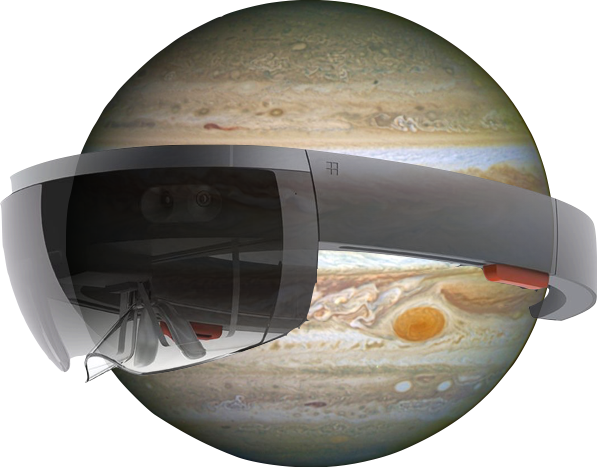Welcome to HoloLens Apps for Astronomy
Join in here to propose, comment upon, or vote on possible HoloLens apps for Astronomy. Learn more about the HoloLens at https://www.microsoft.com/microsoft-hololens/en-us.This is a community site, not affiliated officially with Microsoft.
Enter a title for your new idea. The site will search to let you know if anything already posted is similar, and if not, then please do enter a short title, and then the details once they are requested.

 Augmented Reality Sky Map
Augmented Reality Sky Map
Take Google Sky Map (which is an open source Android app) and port it to the HoloLens. Allow for basic functions like object-finding and labelling — “Where is Jupiter?” “What is that object?”
It's non-trivial to port an Android app to HoloLens, though similar Unity apps may exist. Also, the built-in cameras (2MP) are unlikely to be good enough to resolve stars (even though one or two would suffice for calibration), so a better method would be needed. Phones do it with a compass, accelerometer/gyroscope, and GPS, and it works reasonably well. We know our coordinates, and compass-esque tracking can be set up by defining points in the environment (i.e. face north, calibrate, face east, calibrate) and detecting orientation relative to those points. I don’t think the HoloLens has an accelerometer/gyroscope, so maybe a Kinect can be used for up/down tracking. This is certainly more complicated than a hackathon project, but it would be insanely cool.

Sorry for my slow reply, Caiyi-- we are still very interested in this idea. Please be in touch via agoodman@cfa.harvard.edu. Thanks! Alyssa

 WorldWide Telescope for HoloLens
WorldWide Telescope for HoloLens
Clearly, we need to use HoloLens with WWT. I know Jonathan Fay, Curtis Wong and others (e.g. me) have talked about this for quite some time, but I'm hoping we can use this forum as a way to figure out which functionality to implement first. Let's discuss! (And, Jonathan, is the 3D imagery in the demo app shipping with HoloLens directly from WWT?)

 Volumetric Data Visualization and Analysis
Volumetric Data Visualization and Analysis
Take a library like yt and create an interface to datasets (easier than a folder structure, ideally). Take those datasets and create 3D visualizations of the simulations for quick analysis. Support basic transformations to the data with voice commands and precomputed analyses — “Log-scale this data” “Skip to redshift 0.5” “Highlight dark matter halos” “Show only gas” “Apply ____ filter”
This would basically be a dumb interface to a more powerful computer doing the computation. An ideal balance would need to be found between speed (pre-computing potential analyses) and resource use (doing things on-the-fly only as they’re needed). Maybe this can be done by computing popular analyses for a certain scientific domain or datatype. Regardless, being able to get a quick AR visualization and analysis of a simulated galaxy or universe would be fantastic for easily getting a sense of the data.
Customer support service by UserEcho
